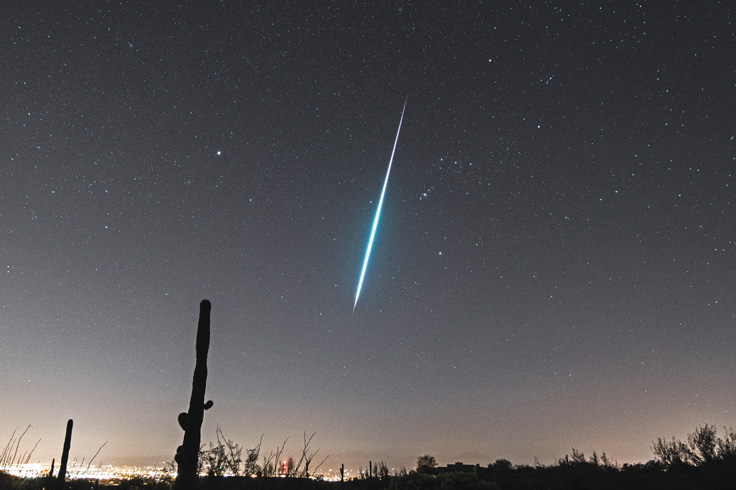As of now, the night sky is active and releasing shooting stars and fireballs from the Geminid meteor shower, often the strongest meteor shower of the year.
Even now, before the height of the Geminids in the middle of December, the shower can still generate one meteor each hour.
There will be a gradual buildup to the peak hours of the Geminids, when you can see over a hundred meteors in an hour. And this is one of the few showers where you won’t have to get up at ungodly hours to catch the best show.
The shower peaks in the evening of December 13 and throughout the morning of the following day in 2022. It is active from November 19 to December 24. That night, the moon will be almost two-thirds full, which is a little disappointing but shouldn’t stop avid skygazers from venturing outside. In the Southern Hemisphere, the best time to look for the Geminids is later at night, and because summer has arrived, you won’t need as many warm clothes as your northern counterparts will.
Rare among meteor showers, the Geminids can’t be linked to an inactive comet that orbits the sun every few hundred years or so and causes brief visits to the inner solar system. Instead, asteroid 3200 Phaethon appears to be the origin, with some astronomers hypothesizing that it is a dead comet or a novel type of object known as a “rock comet,” as reported by NASA.
Whatever it is, the dusty clouds left behind by Phaethon’s trash and waste are denser than the trails left by most comets. Because of this, the Geminids are always one of the most powerful meteor showers each year. On average, hundreds of thousands of pieces, each about the size of a pebble, hit with our upper atmosphere and burn up as we pass through the cloud’s densest region in December.
The easiest way to catch as many Geminids as possible is to choose an observing site with a wide, unobstructed view of the sky on a clear night. Although you should schedule your viewing for the peak night, you can still see a few meteors an hour even today, especially since other showers such as the Leonids and Taurids are still going strong.
If the moon is visible, you can move around so that it is always behind you.
When you’ve found a comfortable position, close your eyes for a few minutes to let them adjust. And at that point, you need do nothing but observe. It’s recommended you set aside at least an hour for the entire event, as there will inevitably be some downtime. On the peak night, you may view up to 150 meteors in an hour under perfect conditions.
If you want to see as many as possible, you should look up at 2 a.m., when the radiant from which the Geminids appear to radiate (in the direction of the constellation Gemini, thus the name) is at its highest. Nonetheless, as was previously said, the radiant is above the horizon earlier in the evening, and these more hospitable hours are also the greatest time to see a bright “earth-grazer,” which is the nickname for a brilliant fireball that appears to flare out spectacularly just above the horizon.
If you want to avoid ruining your night vision by going back inside, you could prepare for your outing in advance by wearing proper clothing and bringing snacks. Have fun looking for things!
